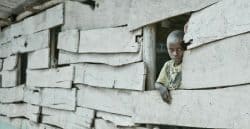A new free online map is helping to promote transparency in fashion supply chains by mapping garment facilities of major brands across the world.
The Open Apparel Registry, an initiative of the charitable arm of C&A, the C&A Foundation, and geospatial software firm Azavea, is an open source database and interactive map that helps the public understand where their clothes are being made.
Take Action: Help End Forced Labor
“This groundbreaking initiative is the first to share, free of charge, important industry data across brands, retailers, manufacturers, multi-stakeholder initiatives and civil society,” said Leslie Johnston, the executive director of the C&A Foundation.
“By doing so, the OAR accelerates collaboration within the apparel industry and contributes to a new paradigm of open data, which we believe is critical to making fashion a force for good.”
i-D reports:
Dubbed the Open Apparel Registry (OAR), the map is the first free-to-use tool to attempt to collate the names, addresses and affiliations of global apparel facilities by using address-matching algorithms.
By leaving the database open sourced, the OAR aims to create the largest and most comprehensive database of facilities, while hoping that centralising the data will help lead to more transparency about where business and retailers are getting their clothes from and aid in the search for more sustainable and ethical suppliers.
Given the number of exposés surrounding the scale of modern slavery, pollution and the negative environmental impact of the fashion industry, the OAR should hopefully not only help provide easily accessible information for the industry, but also hold those still utilising unethical and environmentally damaging suppliers to account.
According to the OAR website, the map can be used for “identifying apparel facilities and their affiliations by collating disparate supplier lists from industry stakeholders into one central, open source map and database.”
Visitors to the site can easily sort mapped facilities by facility name, contributor type, and country name, allowing them to bring up exact GPS coordinates of factories.







Freedom United is interested in hearing from our community and welcomes relevant, informed comments, advice, and insights that advance the conversation around our campaigns and advocacy. We value inclusivity and respect within our community. To be approved, your comments should be civil.